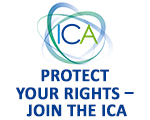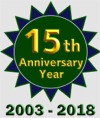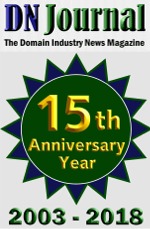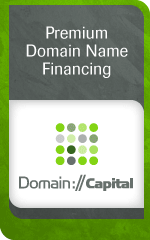|
|
|
Our
2018 Panel of Experts |
|

|

|
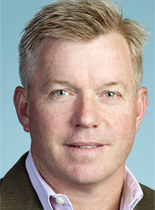
|

|
|
|
|
|
|
|
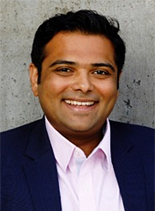
|

|

|

|
|
|
|
|
|
|

|

|

|
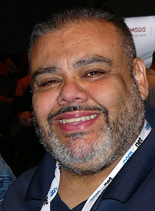
|
|
|
|
|
|
|
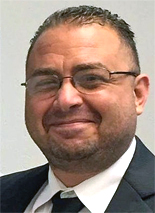
|

|

|

|
|
|
|
|
|
|

|

|

|

|
|
|
|
|
|
|

|

|

|

|
|
|
|
|
|
|
Row
1: (left to right): Tobias
Flaitz (Sedo), David Warmuz
(Trellian/Above.com), Brian Cute (PIR, the .ORG
Registry), Jeff Gabriel (Uniregistry).
Row 2:
Anand Vora (Donuts
Inc.), Sandeep Ramchandani (Radix), Nicolai
Bezsonoff (Neustar), Joe Alagna (Afilias).
Row
3: Mike
Robertson (Fabulous.com), Michael Castello (CCIN),
Morgan Linton (MorganLinton.com), George Verdugo
(CasasBaratas.com).
Row
4: John Colascione
(Long Island Media Inc.), Ray Dillman Neu
(MERGE!), Kate
Buckley (Buckley Media Group), Andrew Rosener (MediaOptions.com). Row
5: Ryan McKegney (DomainAgents.com),
George Hong
(Guta.com), Nico
Zeifang )Team Internet/ParkingCrew.com), Michael
Gilmour (ParkLogic.com). Row
6: Brandon Abbey
(Payoneer), Edward Zieden (NamePros.com), Enrico
Schaefer (Traverse Legal), Zak Muscovitch
(DNAttorney.com, Internet Commerce Association). |
Domain Investors
Regardless
of what sector of the domain industry you work in we believe you
will benefit from reading the opinions voiced by all 24 of
our experts. However, if you want to start with comments from
experts in a particular sector we have grouped them in five
categories for quick access. On this page (where you are
now) you will find Corporate Leaders
Tobias Flaitz, David Warmuz, Brian Cute, Jeff
Gabriel, Anand Vora, Sandeep Ramchandani, Nicolai
Bezsonoff, Joe Alagna and Mike Robertson.
On
Page 2 you will find
Domain Investor/Developers Michael
Castello, Morgan Linton, George Verdugo,
John Colascione and Ray Dillman Neu, as well as Domain
Brokers Kate Buckley, Andrew Rosener, Ryan
McKegney and George Hong.
On
Page 3 we bring you
experts from Domain Monetization &
Financial Services Nico Zeifang, Michael
Gilmour and Brandon Abbey, along with a Community
& Legal Matters grouping that
features Edward
Zeiden and top attorneys Enrico Schaefer and Zak
Muscovitch (Zak also speaks from his role as Executive
Director of the Internet Commerce Association).
Whether
you pick Door #1, #2 or #3 as your starting point you are in for a
great overview of the domain industry today, so let's get this
party started!
Corporate
Leaders
Tobias
Flaitz
CEO, Sedo.com
Most
of our corporate leaders have a hand in multiple areas of
the domain industry making them the ideal point men for covering
the broad stretch of ground this report encompasses. Sedo CEO
Tobias Flaitz is a perfect example as the leader of a company
that has been a pioneer in both the domain aftermarket and
monetization spaces, as well as a key player in helping new
gTLDs gain global recognition.
|
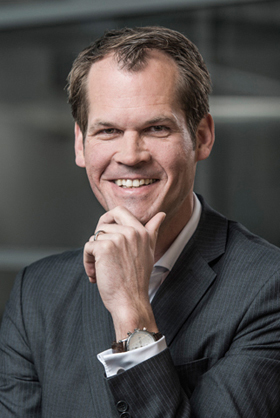
Tobias
Flaitz
CEO, Sedo.com |
As far as
significant events, Sedo visited 40+ events in 2017,
worldwide and with industry focuses that varied from tech
to marketing to our own industry niche. For us the most
significant domain industry events to note were NamesCon,
Domaining Europe, NameSummit and the WHD series.
Now onto trends for which I have three different trends or
areas impacting the last year within the domain industry
and more specifically Sedo’s role as the leading domain
marketplace within this landscape:
a) New gTLDs being adopted by startups and the importance
of legacy domains
b) crypto-currency related domains
c) India as an emerging market
New gTLDs
As we
reported in our own newsroom
there’s been further adoption of new gTLD extensions by
startups. This is countered by a lot of reports of the
decline of new gTLDs. Sedo has long been a strong
supporter of new gTLDs but have always stressed that only
through thoughtful and effective marketing will there be
success. And as we enter the fifth year since these were
first
|
|
on the scene it’s even more important to ramp up
promotion around registrations and adoption in general.
More and more names are past their “launch” phase and
need to be looking at what they can do to further the life
of these names as they enter their true usage phase.
Crypto domains
Crypto-related
domains especially the latter part of the year made
headlines and boosted sales across all marketplaces and
sales forums. Verisign recently reported that the last
month of 2017 included nearly all crypto terms for its
sales. This is the pattern we’ve seen all year long and
is fueled by the momentum behind currencies among more
than just the tech savvy consumer and investor. Especially
the bitcoin and etherum currencies were in the spotlight
of sold domains/most important keywords in domains sold.
India
India
continues to escalate its presence in the domain world.
Like China, India has an ever increasing growing amount of
internet users who are looking stake their claim on
digital real estate. While the U.S., China and Europe are
still the major players in our industry, India has seen
some great strides in domain investing and technology. We
attended the first annual WHD.India/Namescon India
in Mumbai along with other conferences in India and were
able to see firsthand how the passion and enthusiasm
for domains is growing rapidly within this market. At
Sedo, we also welcomed a new Indian Registrar Partner,
EIG making access to this market easier than ever for
our customers.
Looking
ahead to 2018...
New
gTLDs and legacy TLDs
As we have
stated in the past, the adoption of the new names is an
ongoing process that will take both time and collaborative
efforts between service providers like Sedo, Registries
and Registrars. Creating awareness for the importance of a
domain name is of course not limited to gTLDs: the public
still needs to be reminding that their domain is their
home, no matter if it is .com or .shop in the end. Over
the next year, Sedo will continue its support of
registries through unique promotional opportunities such
as our 2018 agency & event roadshow. We’ll be
rolling out literally a new promotional tour in the Sedo
bulli bus visiting conferences and fairs as well as
marketing agencies and digital influencers. In addition to
creating awareness about domains and Sedo in more
traditional ways by visiting our event booths, we’ll be
coming directly to prospects and customers like the
clients of agencies via this out of the box way. The Sedo
roadshow will spotlight not only our brand and how
important domains are but will also feature our Registry
partners and their names while educating on intelligent
domain brand marketing.
Our
main focus is to highlight why companies need a strong
domain strategy:
A domain is their unique identifier to their own
virtual real estate and their control to represent their
brand, campaigns, products or in general their business.
All of the
collaborative efforts in the works are fully supported by
Sedo’s well developed global sales network and
best-in-the business brokers.
And in
parallel to this interview we will be announcing a new
partnership with Donuts to sell their exclusive platinum
inventory (reserved, super-premium domain names) through
our SedoMLS reseller network. In addition, this unique
partnership will also support tiered pricing of domains
carrying a premium renewal fee. This is a jumping off
point for Sedo to establish similar collaborations with
other Registry partners, too, showcasing their names to
Sedo’s extensive customer base.
On top of
that, we have several new registrar partners paving the
way in 2018 towards further growth within our SedoMLS
network: HiChina of Alibaba Cloud Computing Ltd.,
Webnames.ca and Rebel.com have now all implemented
SedoMLS, helping sellers to sell their domains to an even
larger audience and serving buyers to find their preferred
domains easier than ever.
Crypto
Domains & more trends
At Sedo,
we’re close to sharing some big news on the Crypto front
(so consider this an exclusive sneak peek!), we’ll soon
be carrying .ETH names on our marketplace. These names are
the gateway to the future of currency transfers avoiding
long and cumbersome of traditional hexadecimal addresses
by using the Ethereum blockchain technology. Sedo’s
global reach to potential buyers, mainly end users, will
help sellers of those domains to get more awareness for
the crypto currency topic and its related domains in
general. Please stay tuned for a more formal announcement
of this to come. It will be exciting to see how domain
sales with crypto related keywords will develop in prices.
This is similar to domain sales under the TLDs .ai and .io:
Those saw already an increase in sales volume in the past
year. Sellers can count on this continue in 2018,
especially in combination with keywords from the AI and
Fintech industry.
GDPR
– the new Whois
It is
unlikely that anyone from the domain industry is unaware
of the GDRP topic that will impact every member of the
domain industry this year: (https://www.icann.org/dataprotectionprivacy).
It is our belief – backed by extensive data in our
databases and very skilled and professional sales channels
along with input from our solid partnerships with
registries and registrars – that Sedo will prevail
strongly through the challenges presented by this change.
Even anticipated challenges require good solutions and
cooperation industry-wide. Our marketplace will be
prepared for the provided final solutions from a selling
and buying perspective to ensure the continued ease we
already provide within domain trading.
David Warmuz
Founder & CEO, Trellian.com
and Above.com
Trellian.com
Founder David Warmuz celebrated the company's 20th
anniversary in 2017. David, who serves as CEO of both
Trellian its popular domain monetization, aftermarket and
brokerage platform, Above.com, launched Trellian
with his late brother Ren and their remarkable journey was
detailed in the November 2017 DNJournal Cover
Story.
|

David
Warmuz
CEO, Trellian.com & Above.com |
The
first key trend to emerge from 2017 was the
record number of portfolio transactions
taking place throughout the year.
But
the most significant trend is the substantial
increase in demand for domain traffic coming from
our direct advertiser network. This resulted
in higher revenue payouts for our Maximizer
clients. In some cases, our clients saw
direct advertiser revenue increase well over 400%
during last year’s holiday season.
Not only are our advertisers demanding more
traffic, they are willing to pay more for each
visitor.
The
most notable event in 2017 was the exit of two
major parking services and the re-entry of
SmartName, which created huge uncertainty that
still remains for domain investors.
Looking
ahead into 2018, early indicators point to a
great year for Above.com and our clients with some
high brokered sales such as Supernatural.com for
$215,888.
In
our industry, we anticipate more of the same
consolidation and further increases in demand for
domain traffic from direct advertisers due to the
high conversion results.
|
|
The
opportunity for Above in 2018 is having access to
big data to optimize where traffic is sent and to
provide the data to empower investment
decision-making. This is a particularly
relevant opportunity for domain investors who have
challenges finding the time and resources to
manage their portfolios. At the end of the
day, we develop technology for all domain
investors as we want to see this industry grow and
increase in value year to year. |
Brian Cute
CEO, Public
Interest Registry (the Administrator of .ORG)
Brian
Cute
oversees the Public Interest Registry, the
administrator of one of the big three original TLDs - and
one that many believe is the most trusted domain extension
in the world - .ORG. While .ORG is often associated
with non-profit enterprises it enjoys widespread use in
organizations and enterprises of all kinds and that has
made the TLD a reliable performer in the aftermarket as
well as a popular choice among those registering new
domains.
|
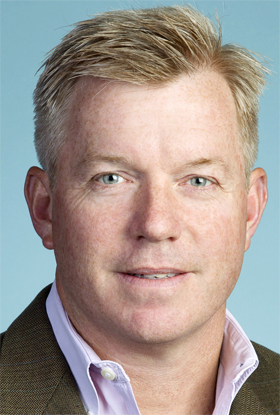
Brian
Cute
CEO, Public Interest Registry (.ORG) |
In 2017,
I believe data security was the most significant
issue impacting the not-for-profit domain space.
Non-governmental organizations (NGOs), like many
organizations, rely on technology to help them
achieve their mission. In fact, according to the 2018
Global NGO Technology Report, 72
percent of respondents accept online donations,
yet only 41 percent use encryption technology to
protect data and communications. As the internet
continues to evolve we see more issues threating
online trust through hacks and data breaches.
It’s more critical than ever to recognize the
importance of online security and for
organizations to ensure the safe keeping of the
data entrusted to them from stakeholders. At
Public Interest Registry, it’s a top priority to
help nonprofits understand the risks they face
online and provide education on the tools that can
be helpful to create safe and secure connections
with stakeholders, supporters and donors. While
the surge of cyber threats is a concerning trend,
it shouldn’t discourage organizations from using
online tools to engage with key audiences.
As
we move into 2018, Public Interest Registry will
continue to advocate for a safe and secure
internet and be a voice for all users on the
internet. We’ve implemented the Domain Name
System Security Extensions (DNSSEC) with the |
|
domains we operate to
protect internet servers from domain name system
attacks. We’ve also developed a strong
anti-abuse policy that targets technical abuse,
such as phishing, and will continue to be a
resource for nonprofits working to keep their
information safe and secure. For data security
tips, nonprofits can reference our recent
three-part blog series which includes best
practices for preventing a data breach,
the key
elements of a data breach response plan,
and what
to do in the aftermath of a breach.
2018
is not only a big year for the internet, it’s a
big year for Public Interest Registry. January
2018 marks Public Interest Registry’s 15th
anniversary as the operator of .org. With this
milestone, we want to continue to assist more
people who are looking for a resource to help
fulfill their missions, and grow .org to ensure it
remains the primary domain and connector for
mission-driven organizations. It’s also critical
that we continue to educate both
existing internet users and organizations coming
online for the first time, about how to use the
internet more effectively and the benefits of a
trusted online identity like a .org. With social
media platforms offering “free” services and
networking, we need to educate users on the value
and importance of a domain name and a website to
control their messaging and how they interact with
their stakeholders, supporters and donors.
Another
big item that will impact organizations from a
variety of industries is the new European Union
General Data Protection Regulation (GDPR)
compliance beginning in late May 2018, which will
cause global organizations to operate differently.
GDPR compliance will kick-start a renewed
sensitivity to privacy and may present some
operational challenges that global organizations
will need to watch out for. The increasingly
complicated environment surrounding privacy and
security on the internet will also mean larger
nonprofits with IT resources will need to review
and update their policies, and possibly expand
operational capabilities. Conversely, smaller
nonprofits, especially those new to the online
world, may need to pay close attention and seek
out the resources they need to ensure they’re
compliant.
With
these regulatory changes comes significant
corporate and organizational challenges that will
impact organizations both large and small in the
year and years ahead. No matter the size, the .org
domain represents noncommercial organizations
around the world making a difference and Public
Interest Registry remains committed to helping
them navigate these shifts so they can continue
making a positive impact on the communities they
serve. |
Jeff Gabriel
Vice President Of Sales, Uniregistry.com
Jeff
Gabriel, who was profiled in our February 2016 Cover
Story, has been a major force in the domain
aftermarket for many years and he still holds the record
for brokering the highest priced domain sale ever made
public - Sex.com at $13 million. At Uniregistry he
oversees a powerhouse sales platform (founded by industry
legend Frank Schilling) that books tens of millions of
dollars worth of sales every year.
|

Jeff
Gabriel
Vice President of Sales, Uniregistry |
There
are two main trends that I have seen over the
course of 2017. The maturity of the new GTLDs that
are not so new anymore. Those who were early
adopters have built matured, and successful
businesses by leveraging the benefits of a GTLD.
They have proven the concept. Other companies are
following suit. The demand has risen, and thus
average prices have gone up. Uniregistry and our
competitors continue to sell big-ticket GTLDs, and
such sales are becoming commonplace. We will have
more sales to announce soon along with one huge
one.
We have also realized a healthy return of the
Asian markets. In Q4 the number of sales we made
as a company rose significantly in Asia in dollar
volume, and in units sold. This was not just to
China, but we had what could be the highest .IN
sale of all time. Unfortunately, it cannot be
disclosed.
Looking
ahead to 2018...
A
few years ago I was asked about what the next year
will hold for the industry, and I said we would
see a year where larger companies purchase other
companies in the space. |
|
That
happened. It continues to happen. I think we are
going to have more strings change hands than ever
before. Additionally the Brokerage market will
continue to grow, with .com remaining king. The
large Brokerages and marketplaces will continue to
innovate, and bring industry changing products to
market. Uniregistry will certainly be one of them. |
Anand Vora
Director of Business
Development, Donuts
Inc.
Anand
Vora is the Director of Business Development for the
world's largest administrator of new gTLD
registries - Donuts Inc. Donuts has more than 200
TLDs in their portfolio. In November 2017 Deloitte named
Donuts the fastest growing tech company in North America.
They were in the news again as we were going to press with
this article, having closed the biggest new gTLD domain
sale ever reported - Home.loans at $500,000.
|
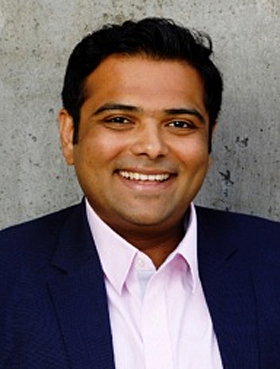
Anand
Vora
Director of Business Development
Donuts Inc. |
2017
was a terrific year for new TLDs. Some
noteworthy trends
·
Consolidation and expansion with registries /
registrars. Donuts acquired Rightside in July,
with a combined portfolio of 238 new TLDs, and is
now the largest portfolio holder for new top-level
domains. At the same time, new entrants included
Wordpress, Baidu and Squarespace. New entrants
make for new dynamics and fresh thinking: we
welcome them!
·
More high-visibility uses of new TLDs.
Companies of all sizes are relying increasingly on
new TLDs to promote their websites. Some examples:
www.thecommuter.movie,
www.io.games
and www.tmobile.careers.
·
New uses of new TLDs. Businesses are
leveraging the power of “real words” for
advertising and marketing. Often, this means use
of a new TLD to redirect or deep-link traffic to a
particular web page. Examples include: www.home.credit
and http://www.amazon.store.
Others are using new TLDs as more meaningful
pathways into social platforms. Example: http://www.fitlo.live
(link to Facebook page).
|
|
These new uses are increasing the number of new
TLDs per end buyer, too, as they realize the
benefits of more consistently managing their brand
identity across a variety of different
environments.
·
International growth – especially China.
With government licensing of new TLDs finally
under way by mid-2017, the Chinese market is
poised for growth in 2018 and beyond.
What's
in store for 2018...
·
Quality becomes even more important. As
businesses continue to form and expand, they will
look to quality new domain names that help them
manage their digital brand identity more
consistently and more compellingly. In this
context, “quality” means names that are
meaningful, have been adopted by other quality
companies, and are in active use for websites,
advertising campaigns, digital marketing
landing-pages, redirects and deep links to
specific web pages, and shorter / more relevant
links to social platforms.
Directly related to quality, we believe that new
premium domain names will command even higher
prices in 2018 and beyond, as businesses and
domain investors alike recognize their
increasing value.
·
New uses of new TLDs will continue (blockchain,
voice apps). We are seeing blockchain
start-ups embrace new TLDs for their digital brand
identities, but we’re also seeing blockchain
technology innovations that leverage the DNS. For
example, Netki
is leveraging the DNS for blockchain identity in
compliance-related applications. GeoNetwork
is leveraging the DNS for its highly precise, 3D
geospatial mapping services platform.
Regarding voice applications, with the popularity
of Siri, Alexa, Cortana and others, we predict
that new domain names will be a very important way
for companies to connect with customers. Think
about it: it’s much easier to say a “real
word” phrase such as “peets.coffee” than to
say “peetscoffeedotcom”.
·
More reasons for registrars / resellers to (re)engage
with customers. The traditional model was to
help a new business initiate its web presence, and
then reconnect at subscription renewal time. But
we predict expanded uses of new domains will
increase the number of “buyable moments” in
the end customer’s business lifecycle. There
will likely be new kinds of value-added services
(VAS) needed, to support these new uses. We
predict that value-added services (VAS) will
expand in scope and reach in 2018, and that will
mean good things for registrars and resellers.
Sandeep Ramchandani
CEO, Radix
Registry (part of the Directi Group)
Just
this month Sandeep Ramchandani
completed a 15-year rise through the ranks to
become CEO
at Radix Registry, the
operator of nine new gTLDs and one re-purposed
ccTLD and part of industry giant Directi Group.
Radix now has over 3 million domains under
management.
|
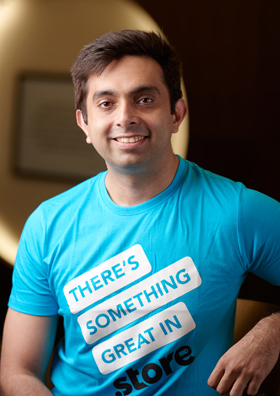
Sandeep
Ramchandani
CEO, Radix Registry |
As
a nTLD registry, the most vital current
trend is the increasing acceptance of the
annuity premium model. A vast majority of
our premium names sales are taking place
through registrars who are selling to
actual end-users. We had taken a gamble
based on the logical reasoning that
startups and SMBs would much rather take a
low-risk, low-upfront cost, despite the
recurring premium fee, vs making a large
upfront investment.
●
Recent
sales
Contrary
to popular belief on the last Quarter being a slow month for
premium revenue with the holiday season, we actually had one of
the best months with December 2017 alone raking in more than
$100k in annuity premium sales (recurring premium names). Among
notable sales were 13 travel-related names in .FUN picked up by
a VC. These are the kind of end-user sales that would really
help consolidate the place of good new extensions in the
mainstream.
We’ve
seen a huge demand from China as well. In January, coin.STORE
was picked up for $26k/year through Alibaba. While this could be
a case of a solid sale riding the crypto wave, in case of
more |
|
established
vertical TLDs like .TECH, we’re seeing
more and more 5 figure sales of nice,
brandable one-word domains. For instance,
edge.TECH sold for $17,500 in Jan 2018.
●
Actual
Websites
As
per data from Namepulse, of the premium
names that were renewed in H2 of 2017, 20%
have a developed website, with 66 websites
that have at least 5 pages. 16%
premiums have a placeholder and 14%
redirect. These are really encouraging
stats that show more and more end users
who have purchased premium domains are
putting them to good use.
In
the last year, we’ve seen more brands
pick up premium domains for fully
developed websites (Intel using insight.TECH)
or new projects (Google using
business.site for Google My Business).
●
Celebrity
Usage
Aside
from premium names, many global
celebrities have been using .STORE for
their official merchandise stores and are
now actively promoting those domains
through their social media accounts. In
.STORE alone, at least 10 such
influencers ranging from Dude
Perfect (YouTube fame), NFL’s Antonio
Brown to Grammy winning artists
like Lorde
& Gorillaz,
have mentioned their .STORE on their
Facebook, Instagram and Twitter.
●
Funded
Startups
As
per Crunchbase data, 15+ startups on Radix
extension have raised more than $430
million in VC funding, with .TECH having
more funded startups in Crunchbase’s top
10,000 list than any other new TLD. In
November 2017, we supported more than 50
startups using a Radix domains at
the Web Summit in Lisbon, Portugal.
Another
encouraging milestone, is the widespread
availability of non-premium nTLDs. Just
2-3 years back, we faced quite a bit of
skepticism when getting the registrar and
reseller channels to actively sell our
nTLDs. In a relatively short period of
time, we now see almost every major
Registrar and Reseller offering a wide
portfolio of nTLDs. At the back of strong
shelf conversion rates, many of the top
providers, including, GoDaddy, Namecheap
and HostGator are actively marketing our
TLDs.
Looking
ahead to 2018...
Some
of the trends that I forsee are:
1)
Consolidation among registries: I expect
that single TLD operators will fold into
portfolio companies. The portfolio
companies enjoy a significant comparative
advantage due to higher economies of
scale. Single registries, which possess
strong TLD assets will find suitors in the
form of portfolio TLD operators which have
an appetite for further investment and
growth.
2)
High value premium domains: In search of
higher revenues, I expect to see
registrars significantly ramp up their
capabilities to offer higher value premium
names. A large part of this supply will be
fulfilled by nTLD operators who are
capable of offering premium names through
EPP at recurring cost per year.
3)
Quality domains from China: I expect to
see higher value transactions coming in
from the Chinese market but unlike the
speculative deals of the past, this time,
these transactions will be purposeful and
backed by an intent-to-use by genuine
companies. So as opposed to seemingly
random short series of alphabets and
numerics, these domains will be of
meaningful Chinese IDNs or English
words. |
|
Nicolai Bezsonoff
Vice President & General Manager,
Regsitry Solutions, Neustar
Nicolai Bezsonoff was a Co-Founder of the .CO
Registry that was acquired by industry giant Neustar
(the administrator of the .BIZ and .US registries
and the registry sedrvices provider for many other
extensions). Bezsonoff remained with the Neustar where he
has been on a steady path upwards having just been promoted
to his current post this month.
|

Nicolai
Bezsonoff
Neustar VP/General Manager,
Registry Solutions |
For
Neustar, 2017 was a year that did not
disappoint in terms of exciting developments and
innovations in the Registry space. The activity
we’ve seen and the conversations we’re having
with brands are showing that attitudes are genuinely
changing. These organizations are becoming
increasingly frustrated with their dependence on
paid search and the third parties they have to go
through to reach their own customers. The world’s
biggest brands are demanding more insight and more
accountability for their ad spend (see
the comments from Marc Pritchard, Chief
Brand Officer at Proctor & Gamble), and this is
leading some to see the potential for .brands to
contribute to this and give them greater control of
the customer experience.
As
brands look for more innovative ways to get their
message to customers, we saw a rare and
highly-publicized advertising campaign from Amazon
Web Services using buildon.aws as the
call-to-action. Throughout the year we also saw
|
|
new
and developed .brand sites from the likes of Google,
Microsoft, Audi, Pioneer, Canon, FOX, BMW, and many
more. The sheer power of the organizations joining
this space speaks for itself.
Beyond
.brands, we’ve seen a natural slowing down of
growth rates in the new gTLD space as we move
through the product lifecycle stages. However, this
has also shone a spotlight on those TLDs that are
leading the way and tapping into consumer needs.
It’s kick-started a time of industry consolidation
as market leaders emerge and less successful players
reassess their options.
On
a less positive note, but of great significance, we
saw a number of security incidents that once again
highlighted the importance, and growing complexity
of the cybersecurity space. Data breaches and DDoS
attacks reminded us how vital it is that the
security industry remain ahead of the game and
continue to innovate in threat mitigation.
Looking
ahead to 2018...
Firstly,
the momentum we saw throughout 2017 bodes very well
for .brands in 2018. Marketers are waking up to the
fact that the way we do digital today has evolved
into an unmanageable beast, and we need to keep
looking for better ways to reach customers and build
connections online. I believe .brands have a huge
role to play in this, and 2018 will see more
widespread advertising campaigns featuring .brand
domains like Amazon’s buildon.aws campaign.
As
brands look for innovative new ways to connect
directly with their customers rather than relying on
social media gatekeepers and search, the value of
these branded domains becomes even more crystal
clear. We’re predicting 2018 to be the year when
demand for a second round of new TLD applications
truly reaches a deafening level. Particularly among
those brands that didn’t apply in the first round
and are seeing their competitors gain a first-mover
advantage, and those global cities that want to
truly become digital cities like .nyc, .london, and
.berlin, we think pressure on ICANN to expedite the
processes required for a second round will continue
to increase and become more urgent.
For
digital businesses around the globe, and of
particular interest to us at Neustar, cybersecurity
and its impact on business will continue to be a
significant point of focus. With attacks becoming
more and more complex, we’re continuing to work
with clients and customers all over the world to
create products and services that can out-maneuver
the malicious actors – such as the impending
completion of our DNS upgrade. We have significantly
increased our DDoS mitigation capacity from 1.1 to
10Tbps (the largest in the world) in response to the
growing magnitude of attacks. We’ve also
implemented a highly distributed scrubbing
architecture of 27 global nodes to effectively
handle traffic and attacks from every part of the
globe and at the same time significantly growing our
SOC and Threat intel capabilities. Finally, we have
moved upstream as well as launching our own WAF
solution to protect not only the network but also
the application layers of our and our clients’
infrastructures. With this ever-changing field of
cybersecurity, we predict it will be another major
focus of 2017 and we’ll continue to monitor,
accelerate and defend the largest online brands from
constantly evolving threats.
And
finally, as the new TLD space continues to mature I
expect we’ll see further consolidation within the
industry from that in 2017. Now that most new TLDs
have been launched and are either finding a niche or
reassessing their strategies, the major players are
looking at where they can add value to their
organizations by taking on new projects and assets.
The market leaders have truly started to emerge and
I expect we’ll see this continue over the next 12
months.
Joe Alagna
Director of Business
Development, Afilias
Domain
industry veteran Joe Alagna is the Director
of Business Development for Afilias,
the administrator of the .INFO TLD and a
major provider of backend services to other registry
operators. Dozens of TLDs around the world are
powered by Afilias.
|

Joe
Alagna
Director of Business Development
Afilias |
I
think that 2017 will be seen as the
year that "new" gTLDs have settled
in. They're really not new anymore and that
is a good thing because, over time, they
will come of their own. They won't
just be driven by hype or newness.
They will be viewed more as niche than
new. As more users opt in for the
niche TLDs, each one will find their way
within their vertical markets.
The
fact that ICANN has baked in safeguards for
the perpetuity of new gTLDs is important
because any of them that "fail"
will be taken over or purchased by gTLD
aggregators like Afilias or Donuts. At
least consumers who bought them and built
them up won't suffer.
2017
is also a year where registries have
consolidated to a large degree. It
doesn't make sense to go it alone today
since the challenges of running a registry
are too difficult and costly. Scale
makes it much easier to meet the
unpredictable security challenges in the
world. Only the largest and best
prepared operators can truly meet these
growing threats.
Finally,
2017 saw the launches of nearly all
dotBrands. There are now many examples of
brands leveraging their TLD to bring greater
security to their customers and flexibility
to their companies. In 2018, companies
that lost out last time will be pushing
ICANN to open the door to them and level the
playing field. |
|
Looking
ahead to 2018...
This
year, my focus will be the promotion of
ccTLDs. I believe that 2018 is a year
where many of them will come of age.
They are tried and true and a lot of these
nascent economies and growing countries are
now realizing that they have a wonderful,
localized TLD for use by their citizens as
well as, in some cases, other meanings to be
adopted by people and businesses not within
their borders.
One
example is how the company I work for,
Afilias, just signed on to be the registry
service provider for .PR (Puerto
Rico). .PR is an excellent ccTLD for
so many reasons. Surely it is
important for businesses and the people of
Puerto Rico, but it is also significant for
companies related to Public Relations.
Gauss Research Laboratory, Inc, the registry
for .PR, has recognized this for many
years. Now, they are standardizing on
the Afilias platform to increase their
security, stability, and scale. They
will also now be able to offer their ccTLD
through a far reaching registrar channel
connected to Afilias' platform.
GDPR
(Europe's new General Data Protection Rules)
are going to absorb the industry in
2018. Afilias is working on solutions
that will protect personal information and
take privacy to the next level without
impairing the ability of law enforcement and
others to address abuse. Many smaller
registries want to offer privacy solutions,
but don’t have the internal tech resources
to support it.
Although
many pundits are predicting that block chain
will play a big role in the domain industry,
I think it is being overplayed. The
fact that a new technology comes of age does
not change the legal rights of existing
industry players. Just because someone
can create a distributed registry at a low
cost, does not mean that existing registries
lose their place and their rights to manage
TLDs. Blockchain may play a role in
future rounds or in future technologies but
I think it is still quite a way out there
and only in the realm of a new application
round.
As
a member of the Domain Name Association, I'm
looking forward to 2018 as a year where the
industry focuses on real growth and
collaborative innovation. Since
drivers of innovation include speed and
convenience, I'd like to see the industry
come up with standards related to how domain
names interface with mobile scanning and
voice recognition applications. Apple has
built a QR code scanner directly into its
photo app. Why shouldn't that app, for
example, be able to read a domain name or
URL as quickly and conveniently as it does a
QR Code? What standards should be
created for voice recognition (related to
domain names)? Is there are standard
way being used by the voice recognition
industry to identify domains and URLs?
If not, there should be and our industry
should be leading the way. So these
are some of the challenges and opportunities
that I see ahead.
Mike Robertson
Director of Business
Development, Fabulous.com
& Directnic.com
Mike
Robertson first gained industry fame
during his years with popular
Australia-based registrar Fabulous.com.
He later left Fabulous and joined a highly
regarded U.S. registrar, Directnic.com.
As fate would have it, Directnic acquired
Fabulous.com in 2017, putting Mike in charge
of business development at his original home
as well as his most recent one.
|

Mike
Robertson
Director of Business Development
Fabulous.com & DireectNic.com
|
For
me, managing two domain large name
portfolios and providing domain
acquisition services for clients,
the most significant trend I saw in 2017
was "end users" continuing
to acquire premium, generic keyterm
(predominantly) dot com domain
names. Like in 2016, last year I
worked with everyone from start ups
and VC companies to large Fortune
500 companies and everyone in
between, either selling them domains
or acquiring domains on their
behalf. Since taking on my role at
Directnic.com three years ago,
domain sales have continued to grow
year upon year.
Another trend, within the domain
sale aftermarket, is the willingness
of end users to do lease deals or
payment plans. A lot of my higher
end sales have been on payment
plans. I've also negotiated some
exclusive perpetual lease deals -
something industry veteran Brian
Null first helped me with. I've
found that by educating buyers about
the various ways to structure deals,
they feel more comfortable doing
these higher value sales.
As for the overall industry, year
in, year out, it's always the same
trend, consolidation. Consolidation
of domain name portfolios, and
consolidation of domain name
businesses and companies. |
|
Looking
ahead to 2018...
Continuing
on from my comment earlier, I
believe there will be continued
opportunities for consolidation. I'm
sure that 2018 will include
reports of domain name companies and
portfolios being acquired.
In my opinion, one of the biggest
challenges the domain name industry
is going to face in 2018 is
disruption from other technologies-
specifically, losing investments to
other industries. I know first hand
that many industry players are
investing heavily in
cryptocurrencies/blockchain.
One trend that I think we will
continue to see in 2018 is that one
word dot coms and 3 letter dot coms
will be acquired by entrepreneurs
and businesses. Among others, this
year we saw Sumo.com (SumoMe.com),
Freedom.com (Freedom Mortgage),
Investor.com (Reink Media Group),
Calendar.com (John Rampton, Due.com)
and Outcome.com (Outcome Health) get
snapped up, as well VOC.com (Viking
Ocean Cruises) and CBA.com
(Commonwealth Bank Australia). No
doubt we'll be seeing a lot more end
users being attached to domain name
sales this year. |
|
|
|
|
